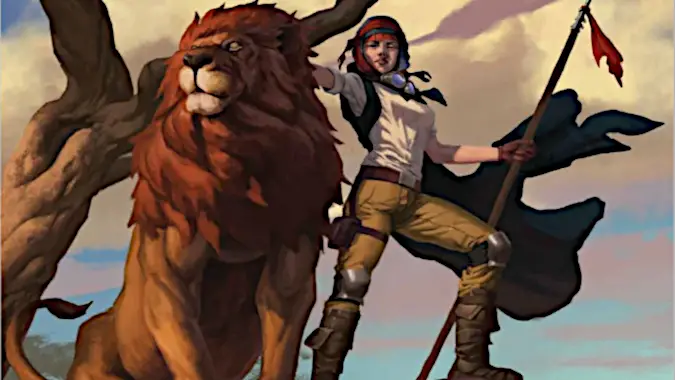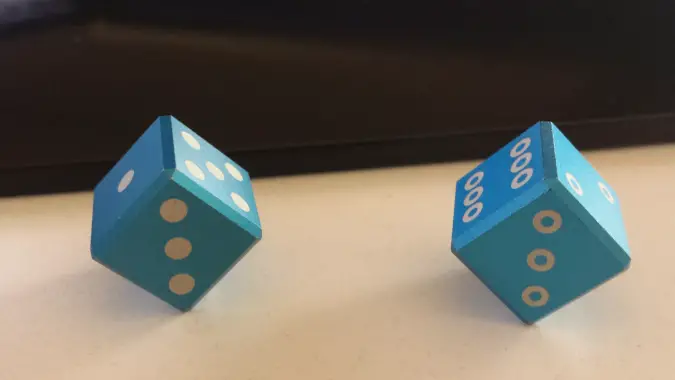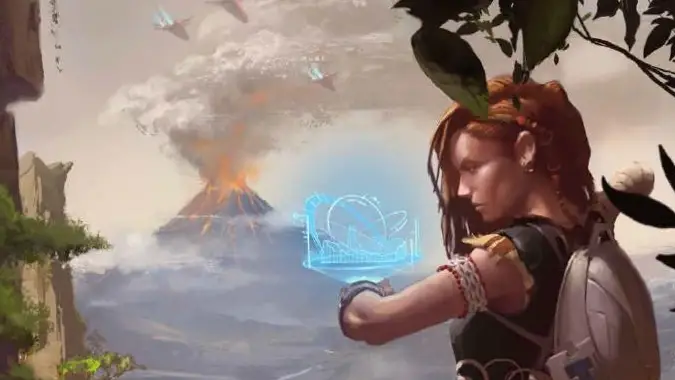Five reasons you should try Savage Worlds Role Playing Game

Tabletop Role Playing Games have really seen a bit of a resurgence lately, thanks to programs like Critical Role, Stranger Things and The Adventure Zone. These programs have brought Dungeons and Dragons to the forefront, and in truth the system and D20 systems in general, have been pretty ubiquitous with tabletop role playing. As someone that’s been around the table for a long time, I thought it might be prudent to highlight some of the other options out there and maybe why you want to consider them for your next tabletop adventure.
Savage Worlds is a relative new-comer in terms of tabletop games. It debuted in 2003 and was made to be a system that could be applied to any settings, much like the D20 system. We’ve seen Supernatural Scooby-Doo like antics in East Texas University, taken to space the The Last Parsec and everything in between. The most well known setting for the game system is probably Deadlands which has become pretty synonymous for Weird West TTRPGs — and Critical Role recently ran a game in this setting if you want a taste.
The Savage Worlds system is an absolute favorite of mine and with the new edition out, I wanted to cover five reasons you might want to give this RPG a try.
1. You get to use all of your dice
One of the most interesting things, to me, about Savage Worlds is that you’ll use pretty much all of the polyhedral set. Your investment into your stats is reflected by a graduating scale ranging from D4 to D20. The larger the die type, the better your character is at something.
The system has a few unique traits:
You always get a “wild” D6. Along with your traits you get a hero or wild die. This is an additional D6 you get to roll along with your skills, regardless of the dice level, and you always choose the higher dice result. It helps to represent a bit of a fail-safe as your character is a hero and generally better at things than normal people, represented by these slightly easier skill checks.
You want to roll 4 or more. The target of any roll is to hit four or more. This is called a success, and for most actions in game this will be what you’re aiming for. The addition of the wild die helps players hit this minimum target. If a player rolls an 8 or more, this is called a raise, and acts very similar to critical hits in other games and normally carries an extra effect. Essentially you do whatever you were going to do, but even better.
Exploding dice bring big results. Whenever you roll the maximum number on a die, it will “explode,” meaning you can roll it again and add the result to the total. Roll a 6 on a D6? You can roll it again. Roll a second 6? Now you can roll it again. This makes it possible to roll a 11 (or more) on a single D6. This includes your wild die, and if both your trait and wild die roll their max value, you re-roll both and add the result, taking the higher of the two as your total.

2. The initiative system is more dynamic
In D&D, whenever you get into a fight you roll initiative to see who goes first, and that order is set until combat ends. It’s very static and can sometimes be fairly boring — particularly because the same high-dexterity characters are likely to be at the top of the initiative list every time. In Savage Worlds, initiative is handled in a completely different way:
Initiative is a card game, not a dice roll. You don’t roll for initiative: instead you use what’s called an action deck. It’s a deck of standard playing cards with the jokers left in, and every round of combat the GM deals out cards from the deck which determines the initiative order for that round. After the player takes their action the card is “burned” (discarded) and isn’t used again until all the cards in the deck have been used. Then everything is shuffled and you start over again.
You play by poker rules. Order is determined by the value and suit of the cards dealt, with aces high and — like poker — counting down in value from there. In instances of ties where players both have the same number, we look at the suit of the cards. Spades are considered highest, followed by hearts, diamonds, and finally clubs being. Jokers are wild cards that allow a player to act whenever they want in a round — even interrupting another player or character’s action. And jokers have another benefit: players get an additional +2 to all trait and damage rolls the round it was drawn.
This has led to some incredibly dynamic gameplay and gives all players an equal chance to act, still dictated by luck and random chance. It evens out player action time and helps to keep things exciting between rounds.
3. Players can mitigate bad luck with “bennies”
Ever have a long run of bad rolls in D&D? It’s pretty frustrating, and that’s why bennies in Savage Worlds are so great. At the start of a session, each player is dealt three bennies, which can be cashed in for various rewards. These can be represented by any objects, though they’re often poker chips.
You might use a bennie to remove a status effect, re-roll a particularly bad dice roll, or to try to soak incoming damage to keep yourself alive. Your GM can adjust these to your group’s needs: my group had a house rule that allowed a player to spend a bennie to force the GM to re-roll dice, and the possibilities are endless. Your GM could also make bennies more scarce, perhaps reducing the number you get per session or making players earn them through epic deeds or hard choices.
This gives players more agency in what happens each session, and helps to lessen the blow of bad luck by giving them options. The finite number of bennies means you have to choose carefully when they are used in a session, and when they are used, these moments feel pretty powerful for players.

Image courtesy of Pinnacle Entertainment Group
4. Characters are more unique with hindrances and perks
Character customization is a big part of Savage Worlds, and nothing shows that more than the hindrance and perk system. This allows players to take flaws or perks to help flesh out their characters. A flaw can be something as simple as being poor or it can be something more complex and character-driven. Your character could be easily scared and scream like the old horror movies when they’re spooked or vast arcane or miraculous powers at their disposal. Hindrances can give additional points for traits or abilities as well, encouraging you to take these detrimental effects in exchange for other buffs.
The effects of these are varied and can be minor boons like favorable interactions with merchants — but they can also have major effects like giving you extra bennies per game session or allowing you to draw extra action cards and choose which to use. They can help shape the narrative of the game as well and allows players to have some input on the world in which they will be playing.
The system gives characters more depth, right from the first play session.
5. Savage Worlds is built for dramatic gameplay
One of the biggest points for me is how much the system caters to dramatic, cinematic sessions. All of the game systems we’ve talked about (and more) help make gameplay exciting. From the initiative system to combat to the game’s rules for chase scenes, every game feels like an action movie. Players are supposed to be the stars in this show, and the Savage Worlds is built to make them feel important and give them agency.
There’s even an optional rule for an Adventure Deck, which adds even more flair to the game by furthering the heroes’ control on the world. These cards can be dealt at the beginning of a session with each player getting one, and can be played at any time. Their effects are like a plot twist: perhaps a big new enemy is introduced or a lost romantic partner shows up to complicate matters. They could also affect combat, increasing your damage or eliminating the damage you take all together.
They represent those huge dramatic moments in movies and television shows that are accompanied by lightning strikes or a musical crescendo!
What are you still doing here? Try it out!
Savage Worlds is a great system that offers dynamic gameplay elements and a forgiving easy to learn system that gives players as much agency as it can over their in-game fates — and we’ve only scratched the surface.
Beyond the cinematic gameplay the system encourages, the sheer multitude of unique settings — from the Wizard of Oz to Supernatural-like worlds — make Savage Worlds even more flexible. It’s a game system you should absolutely consider for your next tabletop role-playing session.
Please consider supporting our Patreon!
Join the Discussion
Blizzard Watch is a safe space for all readers. By leaving comments on this site you agree to follow our commenting and community guidelines.




